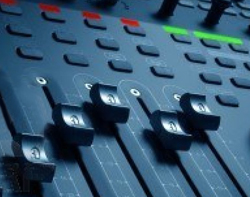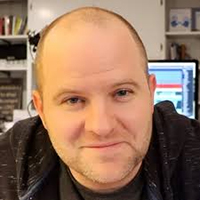A buddy of mine went to culinary school.
He was telling me the other day how much the stuff I talk about on Home Studio Corner is so relatable to cooking food.
(Have you ever watched that show “Chopped”? Wow. Super addicting.)
Anyway.
When you’re starting a mix of a song, it can be difficult to know where to start, what to focus on. So you might randomly tweak the drums, then guitars, then bass, then vocals, then back to drums…entering a vicious cycle of tweaking and re-tweaking.
How about this instead?
Think of your mix as a nice dinner. There are tons of elements that go into cooking a nice dinner, but a good chef knows how to cook dishes that complement one another, how to combine ingredients in a way that enhances the overall flavor.
So, if you’re struggling to have focus in your mix. If it feels like you’re serving a beautiful steak topped with squeeze cheese, here are three different ways to focus your mix.
1. Hone In On The Lead Vocal
Sometimes a killer lead vocal sound is all you need to make your mix sound amazing. If the song is a very vocal-heavy tune, then perhaps you should start your mix by getting a great lead vocal sound, then build the rest of your mix around that.
This means muting all the other tracks and listening to JUST the lead vocal.
Pros—You don’t have to worry about making the vocal “sit’ in your mix. You’re making the rest of the instruments “sit” around your vocal track.
Cons— The mix will sound full while the vocalist is singing, but it might sound empty when he’s not singing.
2. Focus On The Main Rhythm Instrument
You might have a song with a great guitar tone, one that just needs to be heard. I’m not talking about a great guitar solo, I’m referring more to a killer rhythm guitar part. This could be one guitar or several.
In that case, start with the guitars and get ‘em sounding nice and big…and beefy. Treat them like royalty, and make every other track in the mix bow down to them.
This could work the same for a piano-driven song.
Pros—You get a big, non-compromising guitar tone.
Cons—You generally have a thinner vocal and a smaller bass guitar sound, since the rhythm guitars are so big.
3. Make Drums And Bass Awesome
If you’re keeping score, this is my favorite approach, and the one I probably use the most.
With this approach, your focus in on drums first, then bass. You get a huge drum kit sound, then you pull up the bass and make it sit nicely with the kick drum. (Granted, this is easier said than done.)
For many styles of music, if you knock the drums and bass out of the park, the rest of the tracks can be fairly thin and boring, and the mix will still kick people in the face (in a good way).
Pros—Huge drum and bass sound. The low end is so hard to get right in the mix, so by getting drums and bass working well at the beginning, you can roll off excess low end on the rest of your tracks and just let the drums and bass handle the deep stuff.
Cons—With a huge drum and bass sound, you’ve got to find ways to get the other tracks to fill out the mix, make it sound even bigger, without letting the drums and bass overpower the other tracks. Also, the lead vocal tends to be pretty thin, since it’s usually the last track I add to the mix. (Not necessarily a con…just something to keep in mind.)
How To Choose?
As you can tell, these three methods are wildly different and will yield very different mixes.
There’s no right or wrong answer. Listen to the song and let it tell you which direction to go.
The important thing here is that you identify which elements of the mix are the most important, and maintain that focus throughout the mix. This will keep you from backpedaling constantly and “undoing” all the hard work you put into the beginning of a mix.
This whole idea of focus is something I cover in depth in the Production Club.
If you want to look “over my shoulder” as a work on an entire mix from start to finish, explaining everything as I go along, then you should check it out here.
Joe Gilder is a Nashville-based engineer, musician, and producer who also provides training and advice at the Home Studio Corner.Note that Joe also offers highly effective training courses, including Understanding Compression and Understanding EQ.





















